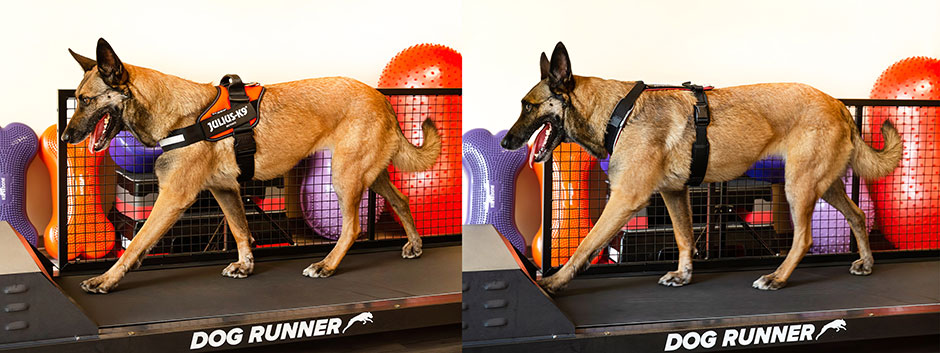The effects of each type of dog harness on dogs’ movement were reviewed in a study by the British Royal Veterinary University. During the research, dog harnesses considered “restrictive” and “non-restrictive” were examined to see what effect they have on the dog’s movement during walking and trotting on a treadmill.
British veterinarians compared a Y-shaped harness considered “non-restrictive” and a chest harness considered “restrictive” during the study. It was described in the study how the grouping regarding movement restriction is based only on assumptions.
The researchers examined the effect of the two harnesses on the movement of nine dogs of different breeds, older than one year, which had no known orthopaedic or neurological problems. During the experiment, the dogs walked/trotted on a treadmill, and the tension of the leash attached to the harness was simulated with two 2.5 kilo weights.
The results showed that, compared to free movement, both harnesses restrict the dogs to some extent. At the same time, it was a surprise that the Y-harness, considered “non-restrictive”, actually restricted the dog’s movement more than the chest harness. “While the non-restrictive harness limited shoulder movement by 4.73° during walking and 9.31° during trotting, the restrictive harness restricted it by 2.16° during walking and 4.32° during trotting “, notes the study on the research, which was published in the journal Veterinary Record.
The researchers pointed out that the result was unexpected, since they assumed that the harness considered “restrictive” would be the one that would hinder the free movement of the dogs’ shoulders to a greater extent. The results of the experiment, as they write, also go against the widespread negative opinion about harnesses that are considered “restrictive”, so they believe that it would be important to review the opinions about harnesses.
At the same time, the experts admit that it would be worthwhile to repeat the tests more thoroughly with better prepared dogs. They also suggest that the movement of the dog’s fur must also be taken into account when examining the restrictive role of harnesses.
